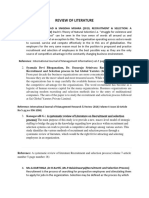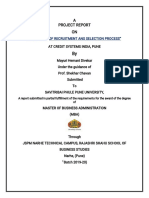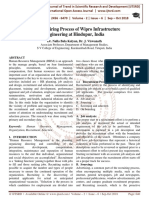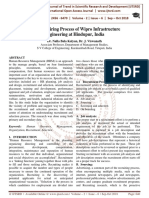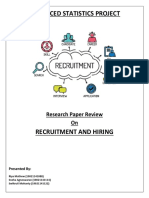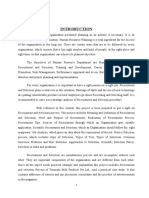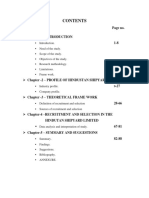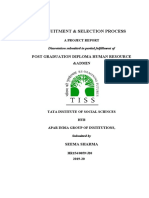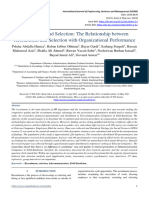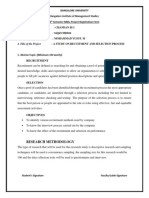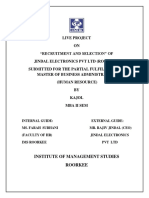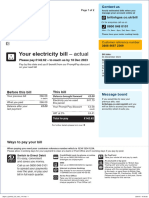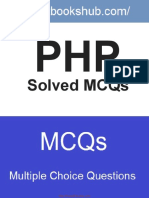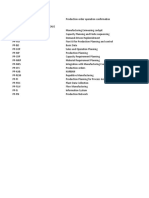0% found this document useful (0 votes)
93 views6 pagesA Study On Recruitment & Selection Process With Reference: November 2014
This document summarizes a research paper on recruitment and selection processes. It defines recruitment as attracting job applicants and selection as picking candidates with relevant qualifications. It discusses common recruitment methods like internal and external recruitment. Selection aims to balance candidate abilities with job requirements. The importance of effective recruitment and selection is to improve performance, control costs, and comply with legal obligations. The paper aims to study recruitment and selection practices in electronics industries and their impact on organizational outcomes.
Uploaded by
akanshaCopyright
© © All Rights Reserved
We take content rights seriously. If you suspect this is your content, claim it here.
Available Formats
Download as PPTX, PDF, TXT or read online on Scribd
0% found this document useful (0 votes)
93 views6 pagesA Study On Recruitment & Selection Process With Reference: November 2014
This document summarizes a research paper on recruitment and selection processes. It defines recruitment as attracting job applicants and selection as picking candidates with relevant qualifications. It discusses common recruitment methods like internal and external recruitment. Selection aims to balance candidate abilities with job requirements. The importance of effective recruitment and selection is to improve performance, control costs, and comply with legal obligations. The paper aims to study recruitment and selection practices in electronics industries and their impact on organizational outcomes.
Uploaded by
akanshaCopyright
© © All Rights Reserved
We take content rights seriously. If you suspect this is your content, claim it here.
Available Formats
Download as PPTX, PDF, TXT or read online on Scribd
/ 6


